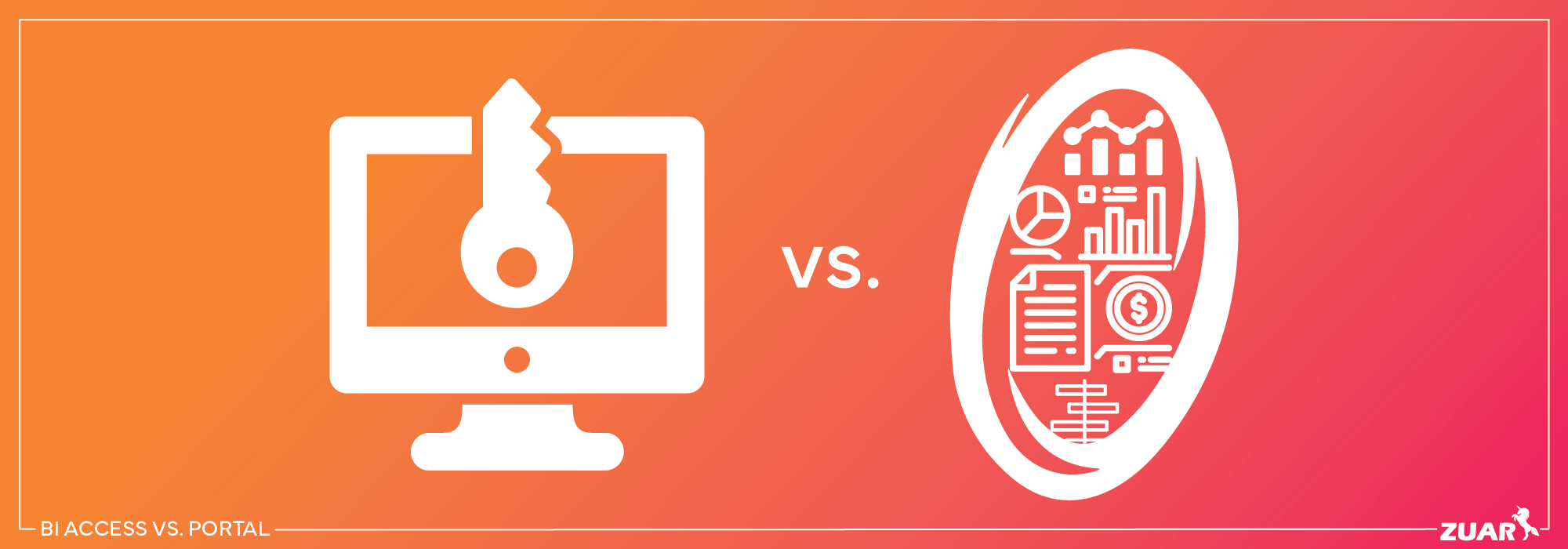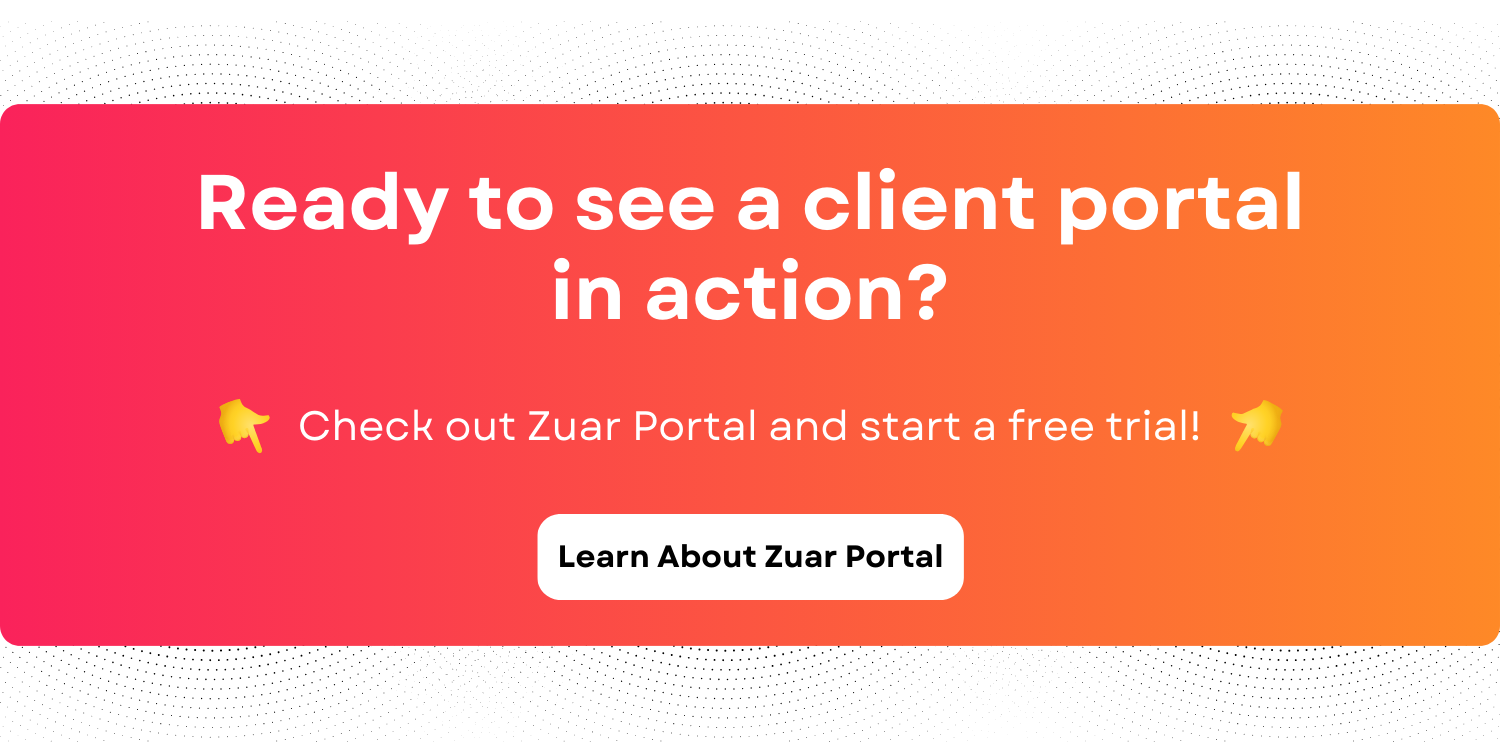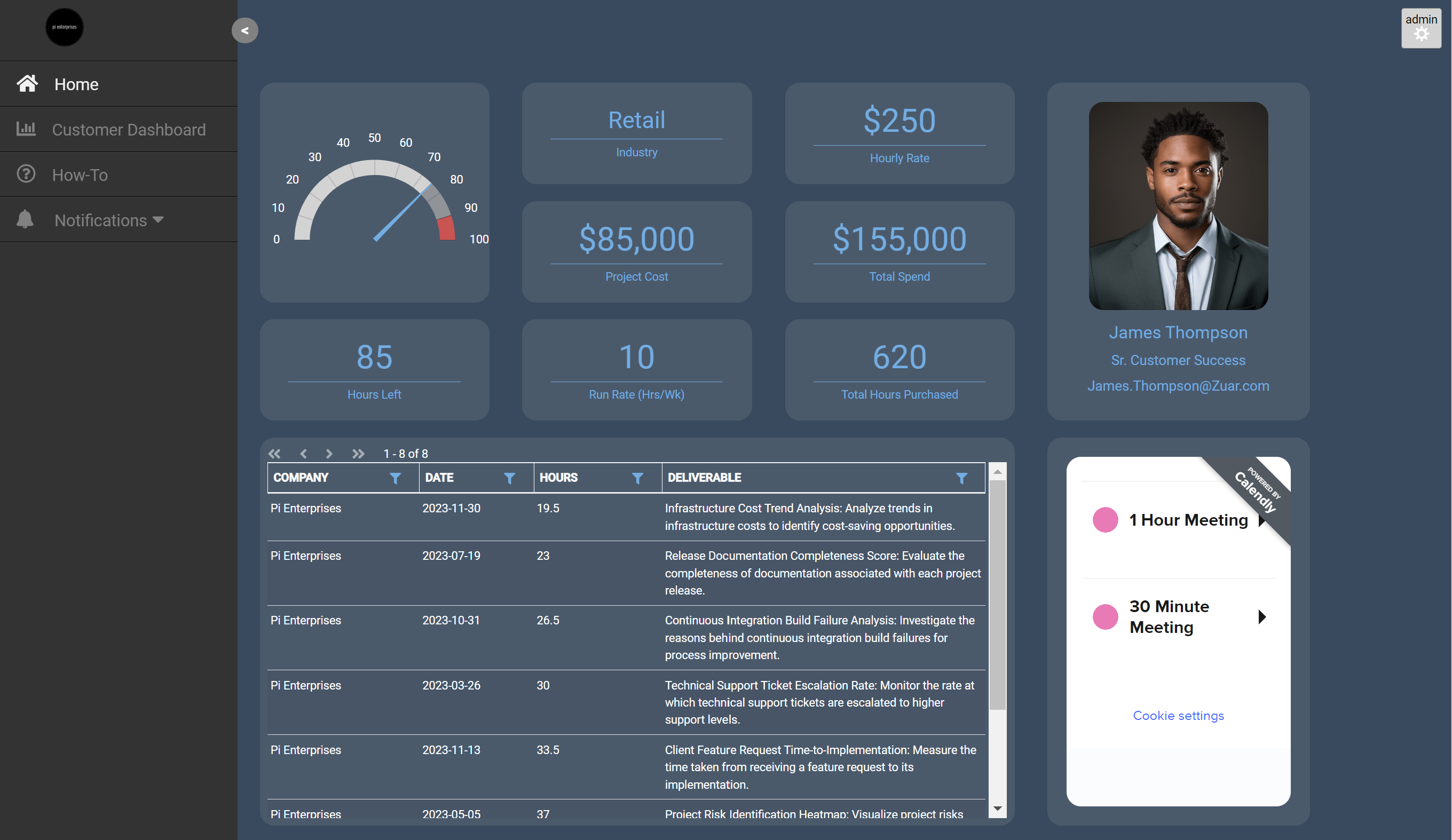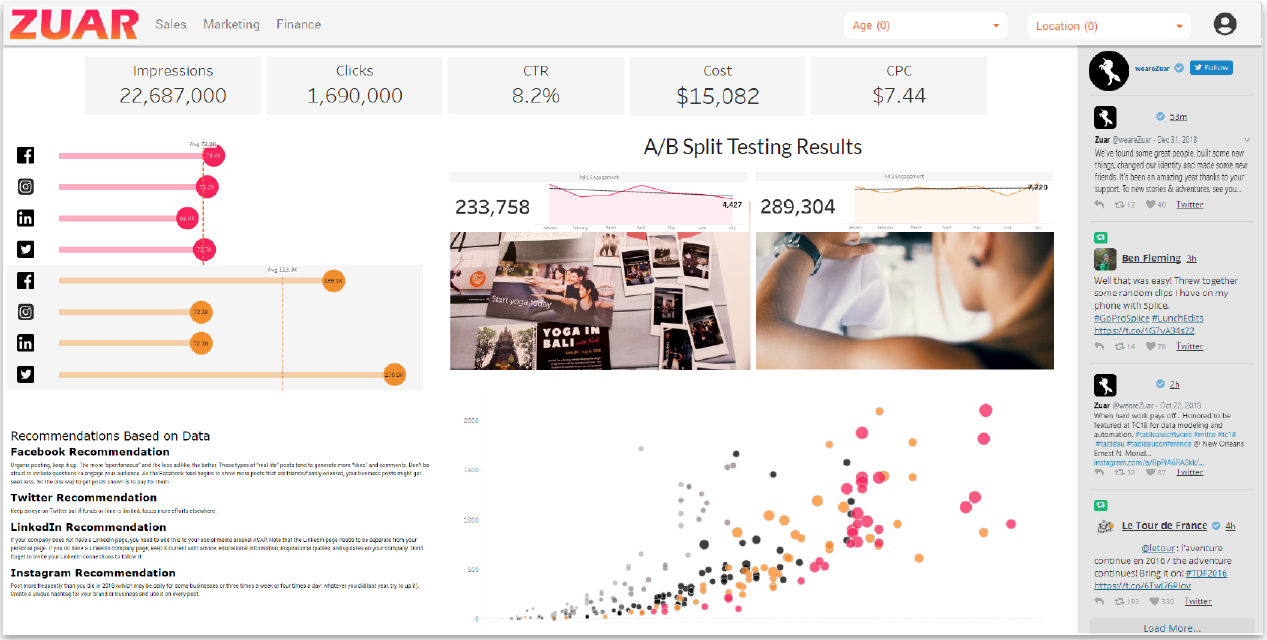BI Access vs. Client Portal: Avoiding Workflow Disruption
Switching platforms to enhance data sharing can benefit businesses, but companies must consider the potential disruptions to customer workflows—planning ahead and choosing a scalable solution, like Zuar Portal, can help ensure long-term success.

Introduction
In today's data-driven world, sharing analytics with customers has become a valuable way for companies to build stronger relationships and deliver more personalized experiences.
Providing customers with direct access to insights not only enhances transparency but also creates an opportunity for companies to monetize their data.
Whether it’s tracking key metrics, monitoring performance, or gaining deeper insights into their business operations, offering data in a user-friendly format can set a company apart from its competitors.
The Problem
When looking for a solution to share these data insights, many companies start small. Often, organizations are lured by the appeal of offering basic BI access at a low cost, thinking it’s a quick way to provide insights without significant investment.
Eventually, these same companies typically decide to upgrade to a more robust platform, such as a customer portal or full-featured analytics solution.
While this shift might make sense from a business perspective, it can cause a ripple effect of disru ptions for end users that many don’t anticipate.
If you're still in the process of planning how you will distribute data analytics to your customers, we're here to help! Learn how our dynamic client portal solution, Zuar Portal, simplifies and streamlines data sharing:

Starting Small: A Common Approach
When companies first consider implementing a solution to deliver analytics to their customers, cost and simplicity are often the top priorities. This leads to decisions like offering basic BI access with minimal features—an easy entry point to gather data and deliver it to users.
However, the “start small” approach often means that the initial solution is not built with scalability in mind. What starts as a cost-effective solution can quickly outgrow its purpose, leading organizations to pivot to a more expansive platform or portal.
While this upgrade is a positive step, the change itself can have unintended consequences for the very users who rely on these tools daily.

The Disruption Problem: Why Changing Platforms Matters
When you disrupt an established workflow—whether it's by introducing a new tool, altering an existing one, or moving to an entirely different platform—you impact the habits and processes that users have grown accustomed to.
For users, the primary goal is efficiency and effectiveness in using these tools. Each disruption introduces a learning curve, even for more user-friendly platforms.
Here are some of the common disruptions caused by a platform switch:
- Learning Curve: Even if the new platform offers superior features, users must invest time to learn how to navigate it, which can lead to reduced productivity.
- Temporary Data Gaps: During the transition, there may be periods when data isn’t available or is presented differently, causing confusion or frustration.
- Loss of Familiar Features: Users often have favorite tools or features in the old system. If these aren't available or function differently in the new platform, it can lead to dissatisfaction.
- Workflow Interruptions: A seamless workflow is key for users who rely on data for decision-making. Any break in that flow can delay processes and hinder business outcomes.
The Real Cost of Disruption
While the initial BI solution may have been “cheap,” the costs of disruption during the platform switch can be significant. Beyond just the price of the new system, consider these hidden costs:
- Downtime and Lost Productivity: Every minute users spend adjusting to a new platform is time not spent on value-added tasks. This downtime can add up, especially if the transition isn’t smooth.
- Frustration and Resistance: User frustration can lead to resistance in adopting the new system, which delays full integration and diminishes the value of the new platform.
- Inconsistent Data Access: When workflows are disrupted, the flow of information can become inconsistent. Data that users once relied on may now be harder to find, leading to decision-making delays.

How to Avoid Workflow Disruption
The easiest and simplest way to avoid this workflow disruption is to start with a client portal solution right off the bat.
By implementing a scalable, robust platform from day one, you ensure that your system can grow with your business needs, reducing the need for future overhauls or shifts that can upset user workflows.

Here are a few key ways to make this approach successful:
- Future-Proof Your Platform: Choose a portal solution that offers flexibility and scalability, like Zuar Portal. This ensures that as your data needs expand, the platform can accommodate new features, integrations, and user demands without requiring a disruptive migration.
- Offer a Unified Experience: A client portal allows you to centralize data access, analytics, and user interactions in one place, reducing the complexity for users. They won’t need to juggle multiple platforms or systems, leading to more efficient workflows from the start.
- Customizable User Interfaces: Look for solutions that allow you to tailor the user experience. When users can personalize dashboards and reports to fit their unique workflows, they’re less likely to feel frustrated by changes and more likely to embrace the tools at their disposal.
Planning for the Transition
Alternatively, if you've already developed dashboards and granted your customers direct access to your BI platform, it's not too late. You just need to ensure you carefully plan your transition to mitigate disruption to end users. This includes:
- Communication: Keep users informed about the upcoming changes well in advance. Clear communication helps set expectations and reduces the element of surprise.
- Training and Support: Provide ample training and support resources to ensure users can quickly become familiar with the new platform.
- Pilot Testing: Start with a small group of users to identify any potential issues before rolling out the new system to everyone.
- User-Centered Design: When selecting or developing the new platform, involve end users in the design process. Their feedback will help shape a solution that meets their needs and reduces friction.
Building vs. Buying a Client Portal
When deciding on implementing a custom client portal, many companies face the decision of building an in-house solution from scratch or opting for a pre-built platform.
Though building a client portal may seem simple, buying often emerges as the smarter choice for most companies. Building a portal from scratch requires significant time, resources, and technical expertise, not to mention the ongoing costs of maintenance, updates, and security.
In contrast, buying a pre-built solution like Zuar Portal allows businesses to deploy a fully functional, scalable platform almost immediately. These solutions come equipped with essential features, continuous support, and the flexibility to customize to your branding needs.
Learn more about this topic:

Conclusion: Don’t Underestimate the User Impact
While the decision to switch platforms might seem like an improvement in the long run, it's essential not to overlook the impact on the end users (i.e. your customers) who will experience the brunt of the disruption.
Companies that future-proof their data analytics systems by implementing data portals right away tend to be more successful in the long run.
Zuar Portal is a dynamic portal solution that is built to scale with your business. With our affordable pricing model, this solution is accessible to small companies as well as large organizations.
Whether you're just starting out or looking to expand, Zuar Portal provides a seamless way to manage and deliver analytics, offering a unified platform that grows alongside your needs.
Its white label interface ensures that users can access the data they need efficiently, without disrupting established workflows, making it a flexible and future-proof solution for businesses of all sizes.
Start your client portal journey today by starting a free two-week trial!



